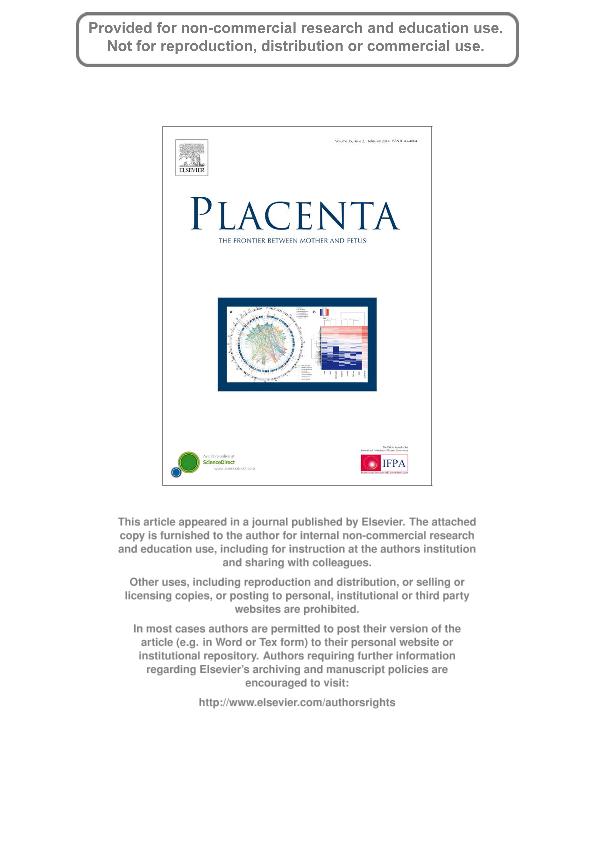Artículo
Cystic fibrosis transmembrane regulator (CFTR) in human trophoblast BeWo cells and its relation to cell migration
Fecha de publicación:
02/2014
Editorial:
Elsevier
Revista:
Placenta
ISSN:
0143-4004
Idioma:
Inglés
Tipo de recurso:
Artículo publicado
Clasificación temática:
Resumen
Introduction: ENaC and CFTR are coexpressed in epithelia and have positive or negative functional interactions. In addition, ENaC and CFTR promote migration in placental trophoblastic cells and human airway cells, respectively. Here we tested the idea if CFTR is functionally expressed in BeWo cells, a trophoblastic cell line, and if it is involved in their migratory behavior. Methods: CFTR expression was studied in BeWo cells with RT-PCR, biotinylation and Western blot. Ion currents were analyzed with patch clamp, and cell migration with the wound healing method. Results: The mature CFTR 160-kDa band was present, and its localization at the surface membrane was confirmed. Forskolin (20 μM), an adenylate cyclase activator, was used for channel activation, and subsequently CFTRinh-172 (2 μM) for its inhibition. The conductances in the presence of CFTRinh-172 plus forskolin (16.0 ± 0.7 pS/pF and 32.6 ± 1.5 pS/pF) were significantly lower than in presence of only forskolin (29.7 ± 0.9 and 47.0 ± 2.0 pS/pF). The conductance of CFTRinh-172 inhibited currents was 14.9 ± 0.7 pS/pF with a linear I-V relationship illustrating the nonrectifying properties of the CFTR. Cell migration was measured and covered 11.2 ± 0.4, 24.0 ± 1.7 and 13.9 ± 1.0% of the wound when cells were cultivated under control, forskolin, and forskolin plus CFTRinh-172, respectively. Proliferation was not changed by any of the treatments. Conclusions: Our results shows that BeWo cells functionally express the CFTR which plays a role in the wound healing increasing the cell migration process.
Palabras clave:
Cftr
,
Bewo Cells
,
Ion Currents
,
Wound Healing
,
Forskolin
,
Cftr Inh-172
Archivos asociados
Licencia
Identificadores
Colecciones
Articulos(IDIM)
Articulos de INST.DE INVEST.MEDICAS
Articulos de INST.DE INVEST.MEDICAS
Citación
Marino, Gabriela Inés; Kotsias, Basilio Aristides; Cystic fibrosis transmembrane regulator (CFTR) in human trophoblast BeWo cells and its relation to cell migration; Elsevier; Placenta; 35; 2; 2-2014; 92-98
Compartir
Altmétricas




